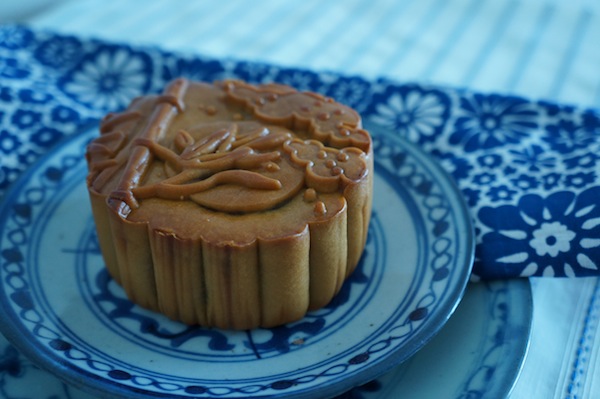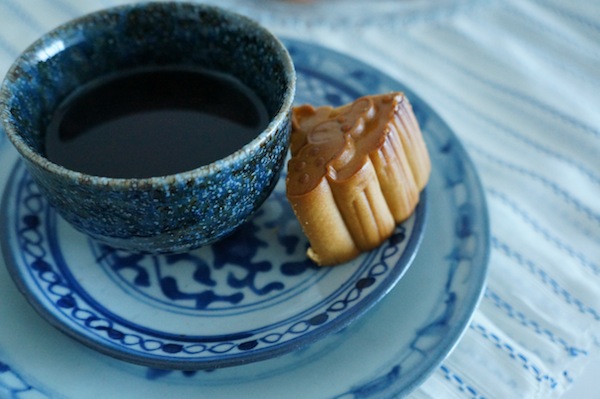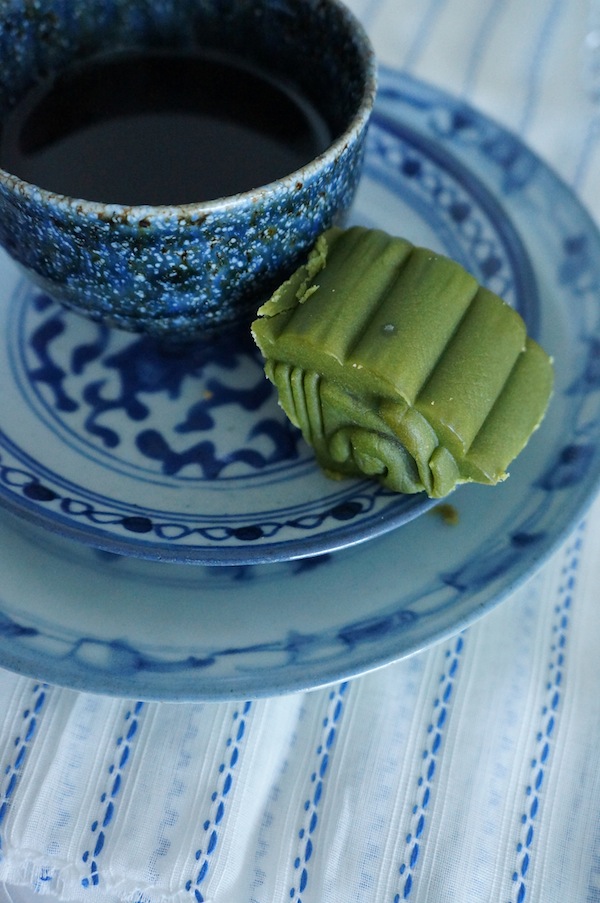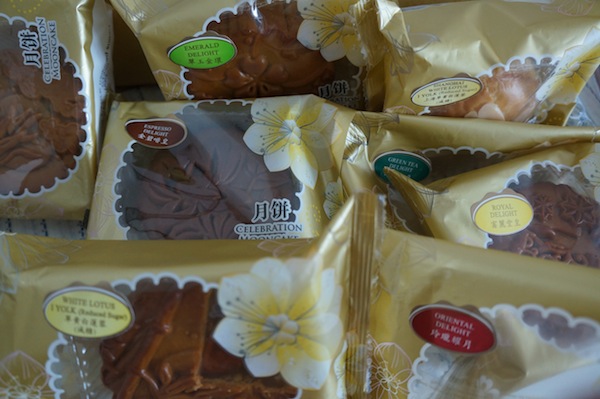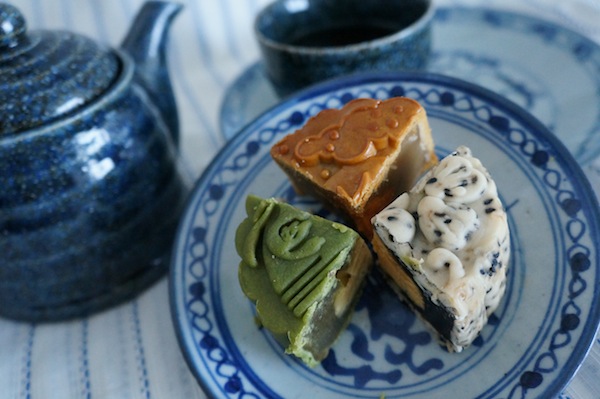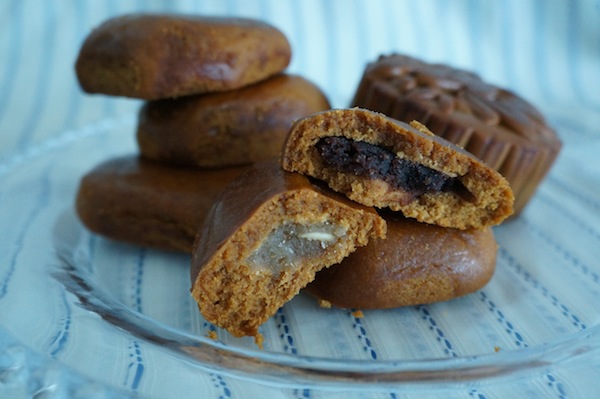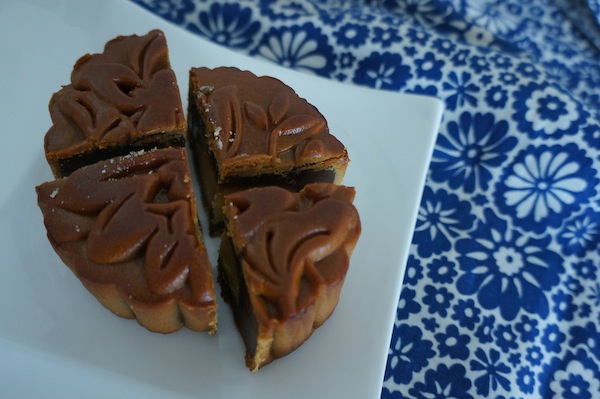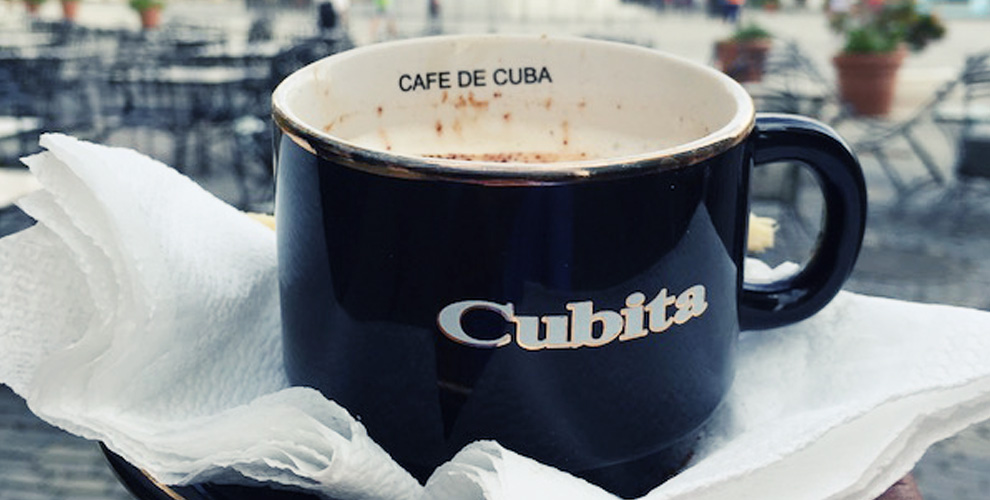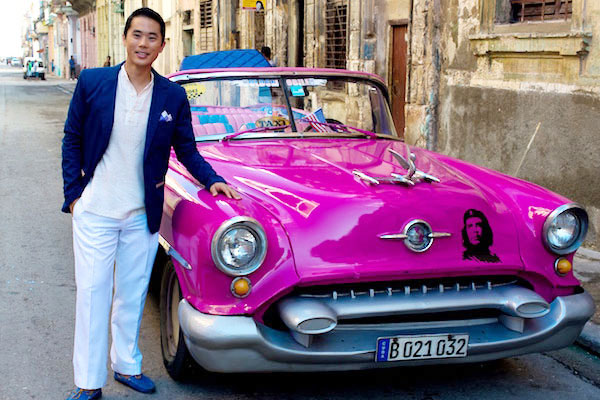A salted duck egg. Lotus seed paste. Encased in lard, sugar and flour. Four inches in diameter. Two inches thick. 750 calories. Do not mess with the mooncake.
This is the eight month of the Chinese lunar calendar. The 15th day, also known as the Mid-Autumn or Moon Festival, falls on Thursday, September 19. It’s a celebration that grew out worship to Chang’E, the moon goddess of immortality. Naturally, the food offered to the deity would be steeped in symbolism.
The roundness of the cake signifies familial unity. Inside, the bold persimmon-orange yolk of a salted duck egg mimics a full moon. Traditional mooncakes are imprinted with the Chinese characters for harmony and longevity, although that practice has largely given way to more artistic aspirations – intricate scenery, pop culture characters and even the insignia of bakeries are the modern norm.
Mooncakes are a big deal in Asia Pacific. Popular corporate gifts, they have a similar stature as the Christmas fruitcake in the West: equally prevalent, equally sweet, and equally loathed by half of the public.
It’s estimated that the people of Hong Kong discarded more than 1.8 million uneaten mooncakes last year. Then in a move to stem spending (and corruption) in an age of austerity, China’s government last month banned officials from using public funds to procure the pastry. The word from big brother: enough with the extravagance.
And extravagant it is. A single cake can cost anywhere from $2-$25 depending on the flavour and associated packaging. Lotus seeds, the prime ingredient for the customary filling, are seen as a luxury item. But competition is tough, and manufacturers are constantly trying to innovate. These days, you can find pastes of tiramisu, green tea and espresso to those with ginseng or ice cream.
Never mind the price tag; don’t ignore its caloric punch. The bulk of the mooncake lies in its filling, which is thickened with gobs of sugar. The health-conscious may be pleased to know that there are now waist-friendlier alternatives including reduced sugar and the omission of salted duck eggs. Also, vegetable oil has largely replaced lard in the thin, outer pastry.
That said, I am obsessed with mooncakes. Grew up loving them and have never stopped. Favourite flavour: red bean paste. I particularly like their less charismatic cousin, the dollcake. About a fifth the price because the ratio of paste to pastry is inverted, it’s simply not as sweet. And that of course equates to license to enjoy a few more at breakfast and teatime.
If you’ve never tasted a mooncake, give it a chance. If it’s not your cup of tea, then don’t feel bad partaking in the next grand Moon Festival tradition: re-gifting.

